Shade sails have transformed from primitive sun protectors into sophisticated architectural elements through the adoption of nautical technologies and advanced materials like high-density polyethylene (HDPE). Modern design principles focus on ideal placement, fabric tensioning , and environmental considerations, ensuring effective sun protection and wind resistance . Installation techniques emphasize strong anchoring and compliance with local codes, while the choice of materials guarantees durability and longevity. This thorough exploration into shade sails covers everything from material science to aesthetic integration and professional installation practices, offering insights that extend beyond mere functionality to enhance the overall outdoor ambiance and operational efficiency.
Historical Development of Shade Sails
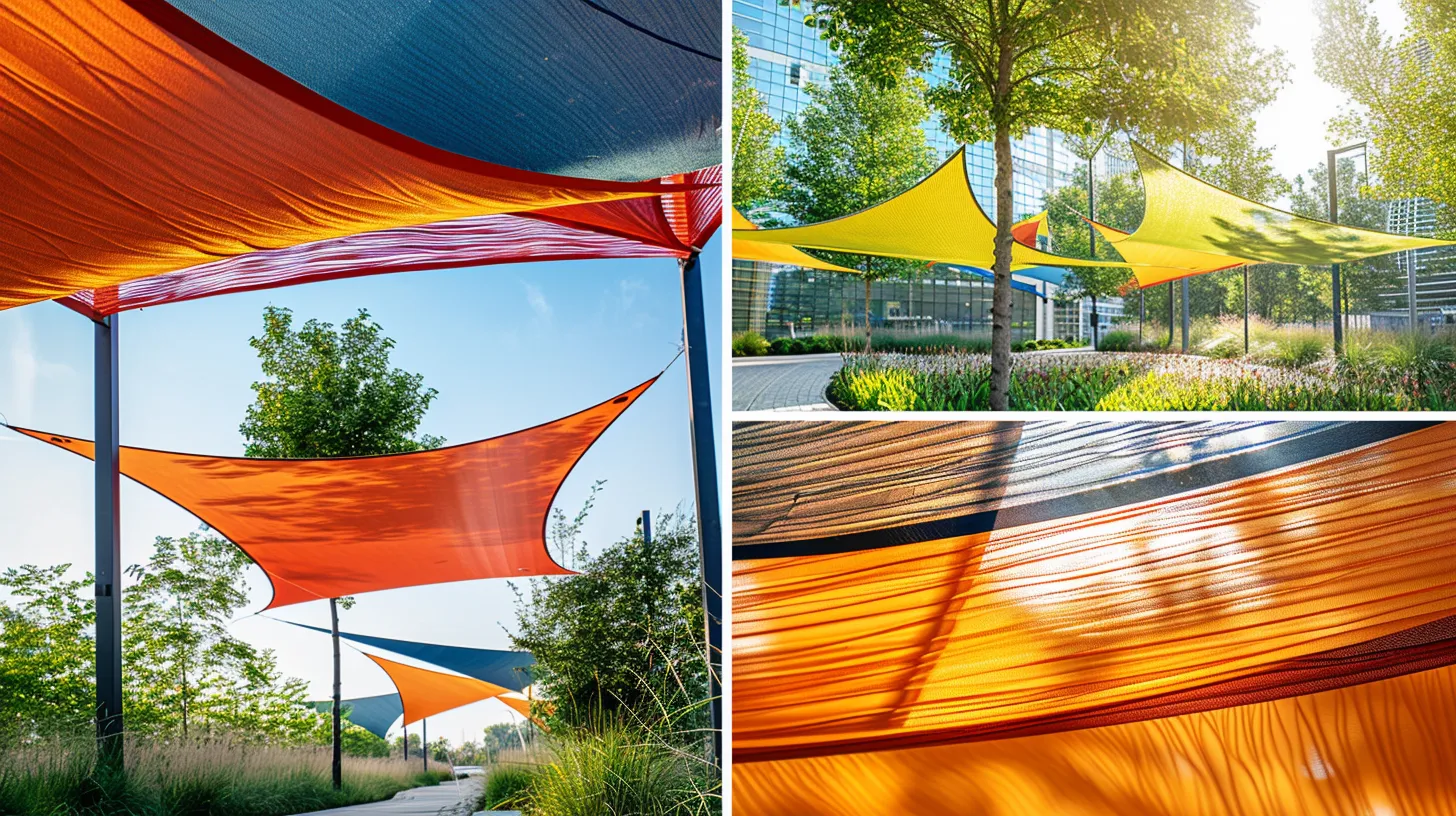
Shade sails, with origins tracing back to ancient Egypt and Mesopotamia , have evolved greatly from simple woven fabric structures to sophisticated architectural elements. Originally intended to provide sun protection, these early structures were fundamental in developing the concept of passive cooling . The design and utility of shade sails underwent a notable transformation, borrowing techniques from ship sails, which were adept at harnessing wind and providing cover.
This nautical influence paved the way for modern innovations in Australia, where the reimagining of shade sails took firm root in the 1990s. The period was marked by a surge in popularity , as the potential of shade sails to blend functionality with aesthetic appeal became more widely recognized. Architects and designers capitalized on this versatility, incorporating them into various settings from residential to commercial spaces.
Engineering advancements during this time greatly improved the structural integrity and flexibility of designs. These innovations allowed shade sails to adapt more effectively to different environments and architectural styles, laying the groundwork for the modern applications of shade sails. The evolution from ancient fabric pieces to engineered, purpose-fit materials and designs marks a notable chapter in architectural history .
Material Innovations and Choices
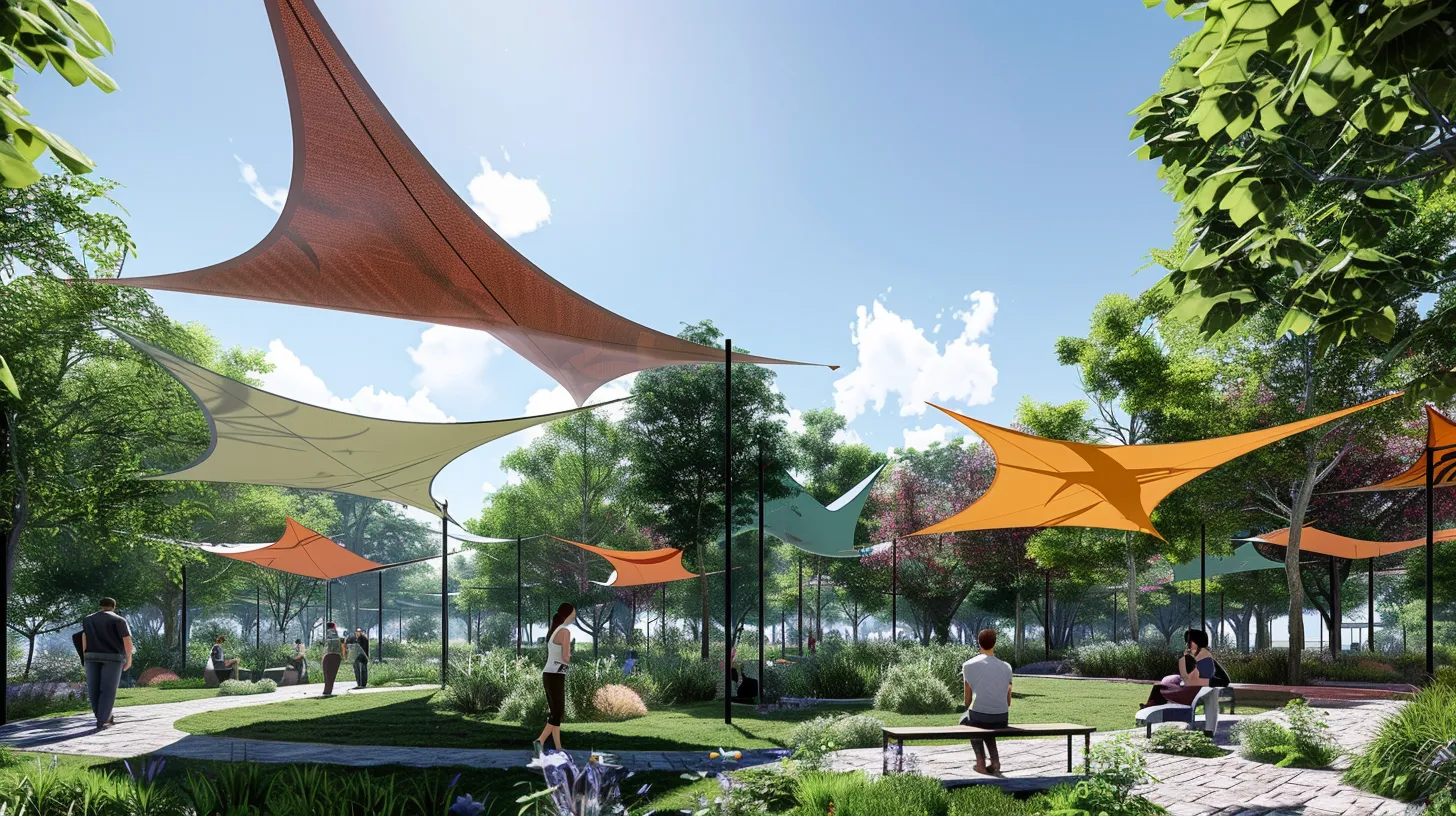
In the domain of shade sails, the selection of materials plays a crucial role in optimizing both functionality and longevity. High-density polyethylene (HDPE) fabric is a favored choice in this field, valued for its robustness and enduring nature, which stands up to various environmental challenges. Specialized mesh fabrics, including SolaMesh and Commercial NinetyFive 340 , are also prominent due to their excellent UV protection and structural strength , essential for areas exposed to intense sunlight.
The engineering considerations extend to the minutiae, such as thread quality , which is critical for maintaining the structural integrity of shade sails. High-quality thread prevents deterioration and failure of seams under stress and weather influences. Additionally, the hardware used in installing shade sails must be of superior quality to resist corrosion and bear the load effectively.
Understanding the diverse fabric properties and material options available allows for tailored solutions that meet specific climatic and aesthetic requirements. This detailed approach to selecting materials ensures that each shade sail installation is both functional and durable, aligning with the precise needs of the environment and the engineering standards required for top performance.
Key Design Principles

Understanding the key design principles for shade sails is essential for maximizing their effectiveness and aesthetic integration into outdoor spaces. These principles revolve around the strategic consideration of sun trajectory , wind direction , and aesthetic appeal . By analyzing the path of the sun, designers can optimize the placement and angle of the shade sail to guarantee adequate sun coverage throughout the day. Similarly, acknowledging local wind patterns helps in selecting the right location and orientation to reduce wind-induced stress on the structure.
The choice of shade sail size , shape, and placement is deeply influenced by the intended purpose of the sail, whether it's for residential privacy, UV protection , or enhancing outdoor usability. Selecting appropriate fabric and hardware is critical; these materials must withstand environmental factors while complementing the visual appeal of the surrounding area. Additionally, the installation methods should align with both the design intent and physical landscape.
Tensioning is another pivotal aspect; proper tension ensures the sail maintains its shape and stability. Adherence to established engineering principles during the installation process guarantees that the shade sail will perform safely and efficiently, integrating seamlessly into the designated space while meeting functional requirements.
Advanced Engineering Techniques
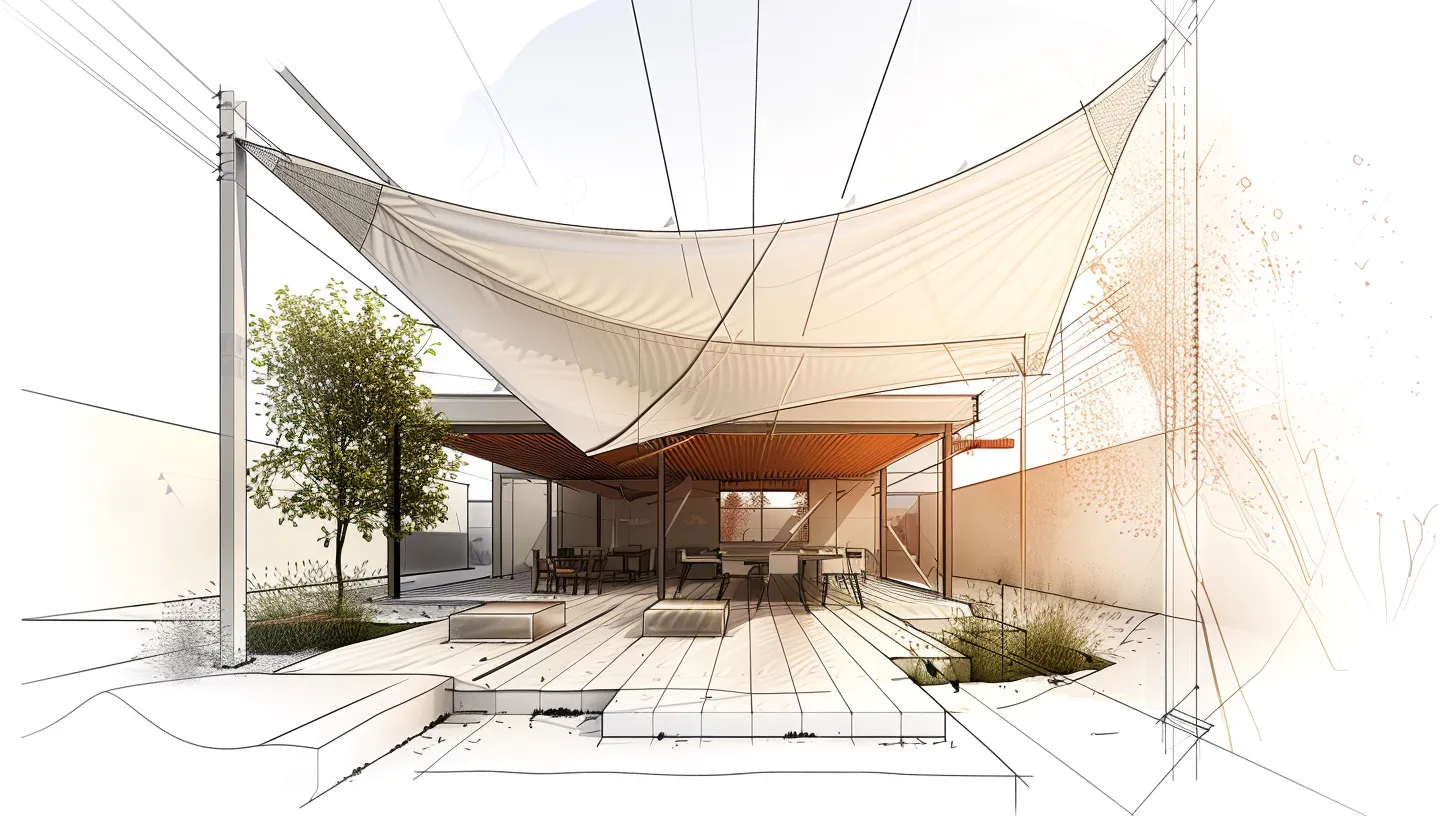
Advanced engineering techniques have revolutionized the design and functionality of shade sails, employing sophisticated methods like load calculations and structural analysis to enhance durability and performance. These techniques are pivotal in determining the stresses that shade sails will endure, thereby ensuring their stability and efficacy . Using advanced software for load calculations allows for precise planning and optimization, preventing structural failures and extending the life span of the installations.
Furthermore, CAD software plays an important role in this process, enabling the creation of detailed 3D models . These models facilitate a meticulous approach to design and implementation, allowing engineers to anticipate and resolve potential issues in shade sail construction. Simultaneously, finite element analysis (FEA) is applied to simulate various environmental impacts, further solidifying the reliability of the shade sails under different conditions.
Materials such as high-tenacity polyester and UV-stabilized fabrics are specifically chosen for their superior durability and resistance to environmental factors. These cutting-edge materials , combined with advanced engineering techniques, greatly contribute to the long-term performance of shade sails, ensuring they remain both functional and aesthetically pleasing for years to come.
Installation Best Practices
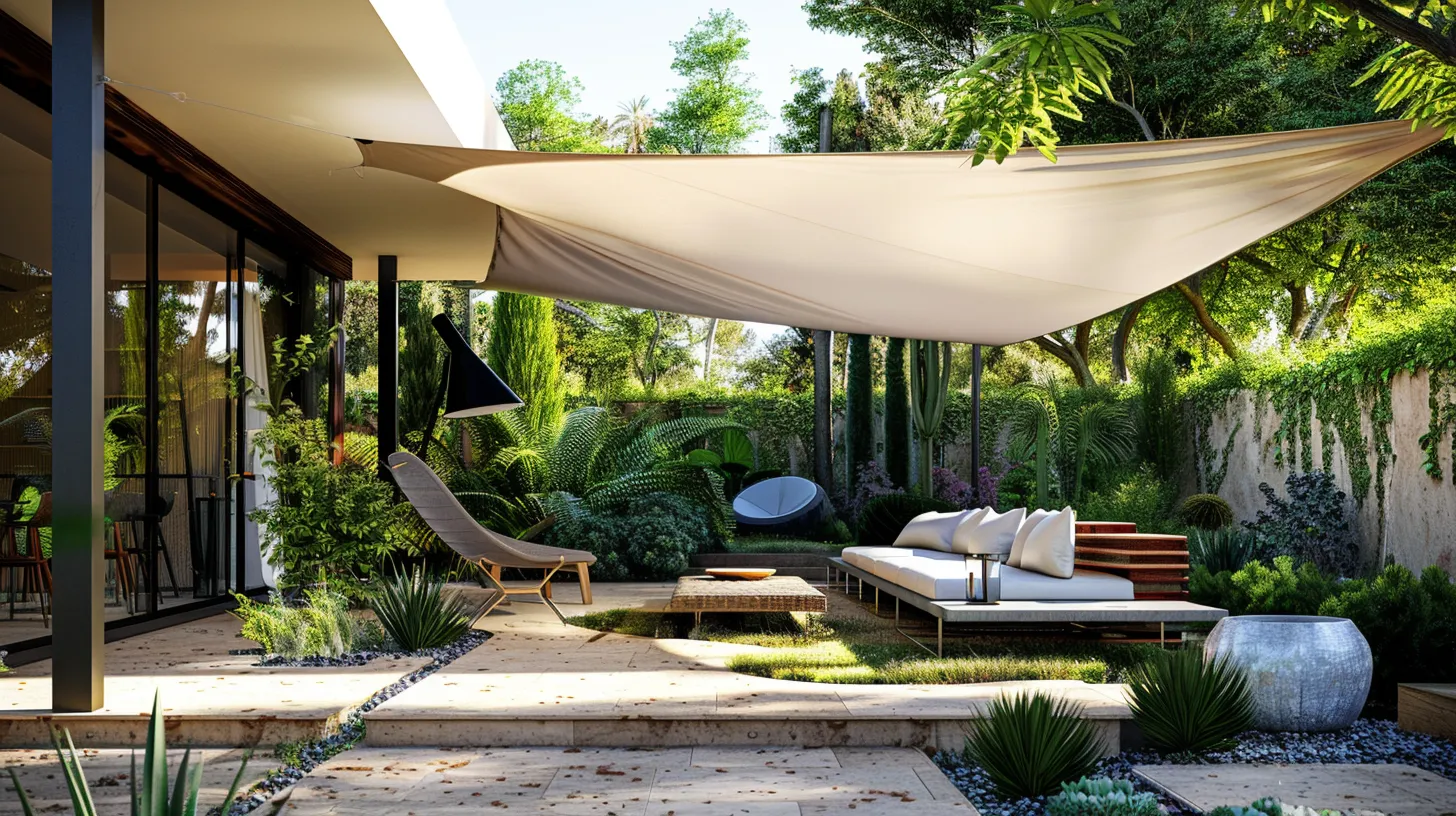
To guarantee the longevity and safety of shade sails , installation best practices must be meticulously followed. Central to effective shade sail installation is the choice of sturdy anchoring locations and the use of high-quality hardware . These elements are crucial in withstanding the forces exerted by both the weight of the fabric and environmental factors such as wind.
Reinforced corners are another critical feature, strategically designed to mitigate the risk at common seam points where tension is highest. This reinforcement ensures that the shade sail maintains its structural integrity over time. Adhering to local building codes is non-negotiable, as compliance provides a framework that safeguards both the installation team and the end-users. It is often advisable to consult an engineer to determine the specific requirements and suitability of the installation site, aligning with both safety standards and functional expectations.
Moreover, preparing for harsh weather conditions by selecting shade sails specifically engineered for such climates can greatly extend their service life. Regular inspections contribute to ongoing maintenance , helping to identify potential issues early and allowing for timely repairs or adjustments, thereby preventing catastrophic failures and ensuring continuous protection and comfort.
Structural and Support Considerations
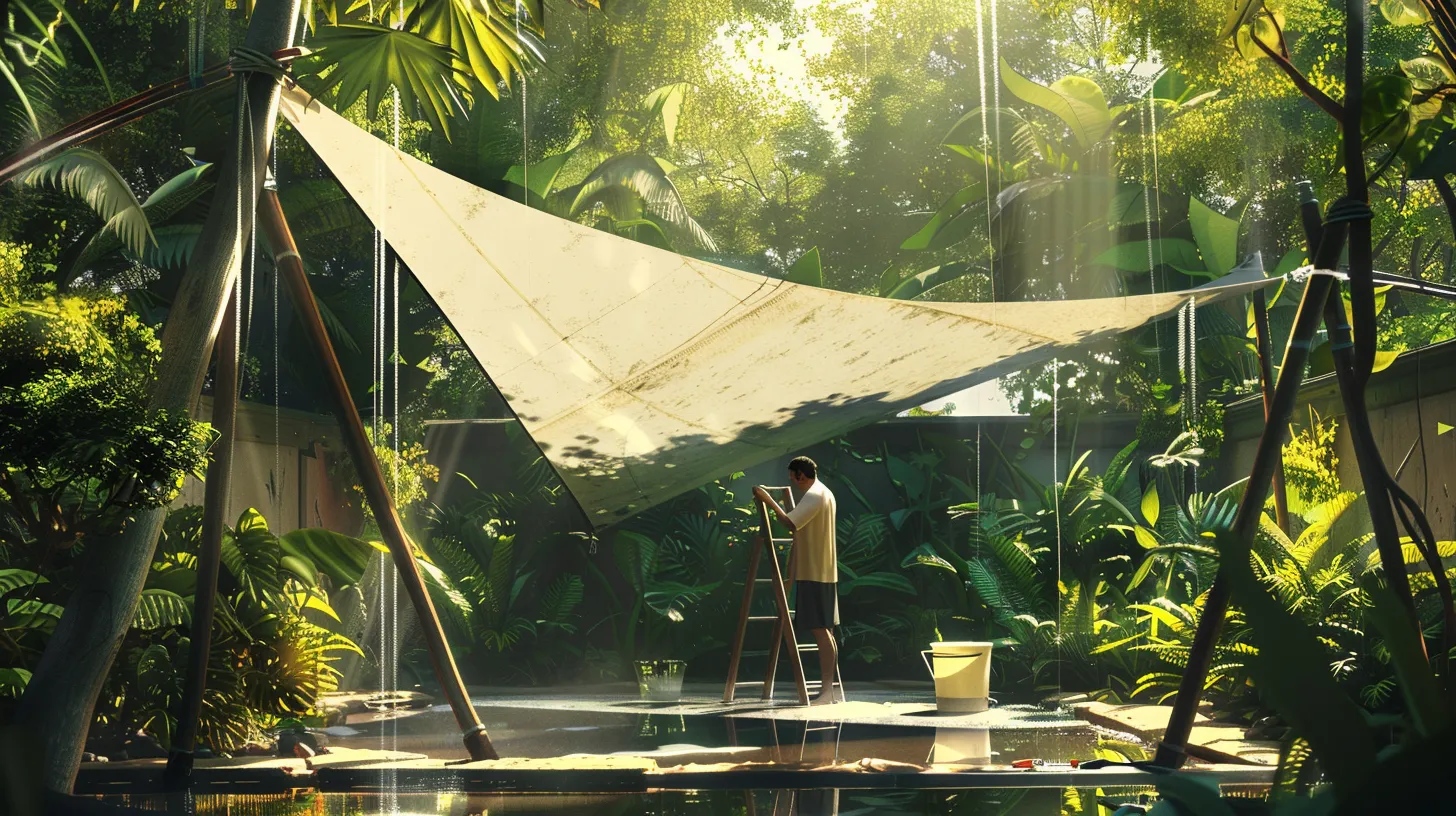
Shade sail installations demand robust support systems and precise engineering to manage wind loads and guarantee overall structural stability . The design of shade sail structures is heavily reliant on sturdy support systems such as steel poles , which are essential for bearing the dynamic and static loads imposed by environmental factors. Engineering considerations must include detailed analysis of wind loads, which vary based on geographic location, sail size, and the specific configuration of the installation. This careful planning ensures that the structural stability of the shade sail is maintained under different weather conditions.
Support poles, a critical component of this system, must be securely anchored with concrete footings . These footings are designed to provide a stable base, ensuring that the poles can withstand the tension generated by the sails without risk of upheaval or failure. Professional assessment plays a pivotal role in this scenario, guiding the integration of engineering principles with practical installation techniques.
Adhering to local building codes is not merely a regulatory formality but a necessary measure to enhance safety and durability. Such codes dictate the minimum standards for material properties, installation methods, and safety precautions, forming an indispensable framework for dependable shade sail construction .
Performance and Durability Insights

Building on the structural foundation, understanding the performance and durability of shade sails is equally important for ensuring their long-term effectiveness. Shade sails, especially those crafted from HDPE fabric , are celebrated for their robustness and ability to endure diverse weather conditions . This fabric choice not only enhances durability but also contributes to a longer lifespan, which can vary from 3 to 10 years depending primarily on the material's weight and quality.
Heavier fabrics are particularly advantageous, as they offer greater resistance to tearing and wear. Additionally, these fabrics are less prone to succumb to environmental stressors such as UV rays and moisture, key factors that can degrade lesser materials over time. The integration of reinforced seams further fortifies the structure, addressing one of the most common failure points in shade sails. These reinforced edges significantly reduce the risk of fraying and separation, thereby extending the serviceability of the installation.
To maximize the potential lifespan of shade sails, regular maintenance and proper care are essential. Simple actions like periodic inspections for wear, prompt cleaning of accumulated debris, and careful handling during installation and removal can profoundly impact their overall durability and functional lifespan.
Aesthetic and Functional Integration
Integrating shade sails into outdoor environments requires careful consideration of both aesthetic appeal and functional utility . Aesthetic integration focuses on selecting shades and shapes that not only complement but enhance the surrounding architecture and natural landscape. This involves a thorough analysis of color schemes and geometric patterns that can both attract the eye and blend seamlessly with existing elements.
Functionally, shade sails are designed to offer maximum sun protection , incorporating materials that provide UV protection to create a safe outdoor space. The engineering considerations for these installations include evaluating the sun's trajectory across the space to optimize shading throughout the day. This functional integration ensures that the area remains usable and comfortable, regardless of the sun's position.
Custom design is pivotal in achieving a successful integration of shade sails in outdoor settings. By customizing the shape, size, and orientation of the sail, designers can create unique solutions that address both the aesthetic qualities and the practical needs of the space. Innovations in shade sail design have expanded the possibilities for their application, making them not only practical sun shields but also significant architectural features that enhance the overall ambiance of outdoor environments.
Maintenance and Care Recommendations
While important and necessary integration are fundamental in the design and installation of shade sails, their longevity and performance also depend on adhering to proper maintenance and care guidelines. To preserve the integrity of sun shade sails and guarantee they continue to enhance any outdoor living space, regular cleaning is essential. Using mild soap and water to remove dirt prevents the accumulation that can degrade materials over time.
Moreover, it is essential to check for signs of wear such as fraying edges or stretched fabric. Identifying these issues early allows for timely interventions, avoiding more severe damage that could compromise the sail's functionality. Implementing a maintenance schedule that includes annual inspections and adjustments can further safeguard against potential failures.
Considering the vulnerability of sails to harsh weather conditions, the proactive step of dismantling them during extreme weather can notably extend their lifespan. This precaution helps prevent undue stress and damage. In addition, a thorough inspection of hardware components like turnbuckles and attachment points is necessary to detect rust or corrosion, which could undermine the structural stability of the installation. Regular oversight and care ensure that shade sails remain a reliable and attractive addition to any setting.
Future Trends in Shade Sail Technology
Advancements in shade sail technology are poised to enhance both functionality and aesthetic appeal in the coming years. Innovations in fabric materials are central to these developments, focusing on increased durability and improved UV protection to extend the lifespan and safety of these structures. Emerging features such as self-cleaning fabrics are set to reduce maintenance needs, while integrated lighting systems will expand usability into the evening hours, enhancing both functionality and ambiance.
The integration of automation and smart technology is transforming how shade sails operate, allowing for effortless deployment and adjustments in response to environmental changes. This progression towards automation underscores a broader trend towards convenience and user-centric designs in architectural textiles.
Furthermore, the push for sustainability is driving the adoption of eco-friendly materials , such as recycled fabrics, and designs that are energy efficient. These sustainable practices not only support environmental stewardship but also cater to a growing consumer demand for green products.
Lastly, significant research and development efforts are being directed towards improving the wind resistance and weatherproofing of shade sails. Enhancing these aspects guarantees better performance and reliability in diverse weather conditions , securing long-term value and satisfaction for users.










